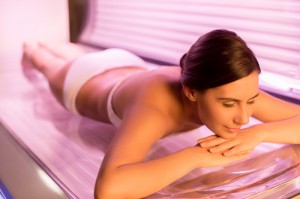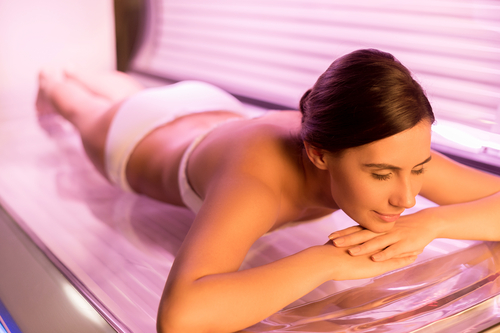 Fewer teenagers wear sunscreen when exposed to the sun, and the rate of indoor tanning has hardly changed, according to a recent study conducted at William Paterson University in New Jersey and published in the Preventing Chronic Disease journal, entitled, “Use of Sunscreen and Indoor Tanning Devices Among a Nationally Representative Sample of High School Students.” The results raised concerns, since both behaviors are related to an increased risk of developing skin cancer.
Fewer teenagers wear sunscreen when exposed to the sun, and the rate of indoor tanning has hardly changed, according to a recent study conducted at William Paterson University in New Jersey and published in the Preventing Chronic Disease journal, entitled, “Use of Sunscreen and Indoor Tanning Devices Among a Nationally Representative Sample of High School Students.” The results raised concerns, since both behaviors are related to an increased risk of developing skin cancer.
The William Paterson University research team concluded that only 56.1 percent of high school students used sunscreen in 2011, which represents a drop of 11.6 percentage points compared to 2001, a year in which 67.7 were reported to have used sunscreen. On the other hand, the number of teenagers that said they used artificial tanning devices decreased only from 15.6 percent to 13.3 percent, which the researchers consider too small of a variation to be considered.
The authors also noted that during the 10 year study period, the number of melanoma cases — the most deadly type of skin cancer — also suffered an annual increase of 1.6 and 1.4 percent among men and women, respectively. “It’s alarming,” said Corey Basch, one of the study authors. “Given that the rates of skin cancer and melanoma are going up, we would have liked to have seen sun protection measures also going up.”
He went on to note that, “High school years are important years that can impact the future. High school students are starting to make decisions for themselves. This research and other research suggest that adolescents continue to put themselves at risk.”
The dermatologist working on the study, Dr. Jeanine Daly, also expressed her surprise and concern with the situation, since she said there needs to be a greater awareness for the need to use sunscreen, avoid ultraviolet exposure, and prevent skin cancer. “No matter how hard we’ve been trying to get that message out, we need to keep at it and work harder,” she advocated. “The bottom line is that skin cancer is largely preventable.”
Even among the population that uses sunscreen, the dermatologist believes that the typical method of sunscreen use may not be the best. Therefore, Dr. Daly recommends the use of a sunscreen that covers both UVA and UVB rays, which consumers can confirm through the presence of the compound zinc in sunscreen products. Additionally, the amount of sunscreen used may also not be the correct, as she explained that during the course of one day, a person should use an entire tube of sunscreen, while some people mistakenly believe that the same amount is enough for one summer.
The reasons for the numbers examined during the study are not known, but Dr. Basch stated that she is willing to do more research in order to analyze it. She also believes that the results of the study are a representation of the society and its need to change the beauty paradigms that see artificially tanned skin as attractive.


